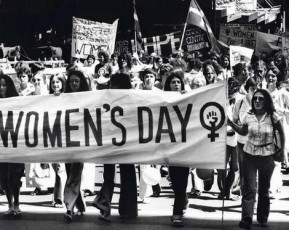As today is “International Women’s Day,” I thought it would be a perfect day to begin a general introduction to the Women’s Rights Movement in Canada and North America for an Anthropological Research Assignment.
Still fighting for their rights around the world, many women are still fighting for the same rights and freedoms that Canadian and other Western World women have today.
Just an aside to explain how this important day for all women started:
In 1910, a woman by the name of Clara Zetkin came up with the idea of “International Women’s Day” while attending an International Conference of “Working Women in Copenhagen.” A year later, the first official International Women’s Day was recognized on March 19, 1911 (IWD 2012).
Looking forward from that idea, in 1975 the UN declared March 8th to be “International Women’s Year” and has been celebrated on the same day every year to this day (IMD 2012).
Today, many improvements have been made to improve women’s right across the globe. Although Canada is well above many countries in this aspect, there are countries who still lag decades behind Canadian women. Not to forget, “The Women’s Rights Movement” and the “Women’s Liberation Movement”, have been very successful in the past and still stand strong today (from now on I will just refer these to the aforementioned as “women’s movements”). Their colourful and creative use of language has been very profound in both the past and the present. The creative use of words and definitions, reclaiming of words or names, and the body language have made the women’s movement so successful.
“The generative power of language comes, in part, from the ability of a single characterization or representation to invoke multiple discourses. Race, gender, class, citizenship, and sexuality all are discursively linked. The power of gender comes through constitutive practices that not only produce people as “naturally” women and men, but which also produce heterosexuality, homophobia, xenophobia, racism, ans class discrimination” (Pascale 2007: 77).
Stay tuned as more will be posted soon!
For further information about International Women’s Day or any information of the examples I use in my blog posts, please see the Links page for all the addresses!
—————————-
Please note that due to an error in formatting, the references I am citing have indenting and spacing issues.
Literature Cited
IMD
2012 About International Women’s Day (8 March).
http://www.internationalwomensday.com/about.asp
Pascale, Celine-Maire
2007 Making Sense of Race, Class, and Gender: Commonsense, Power, and Privilege in the United States. New York: Taylor & Francis Group.

